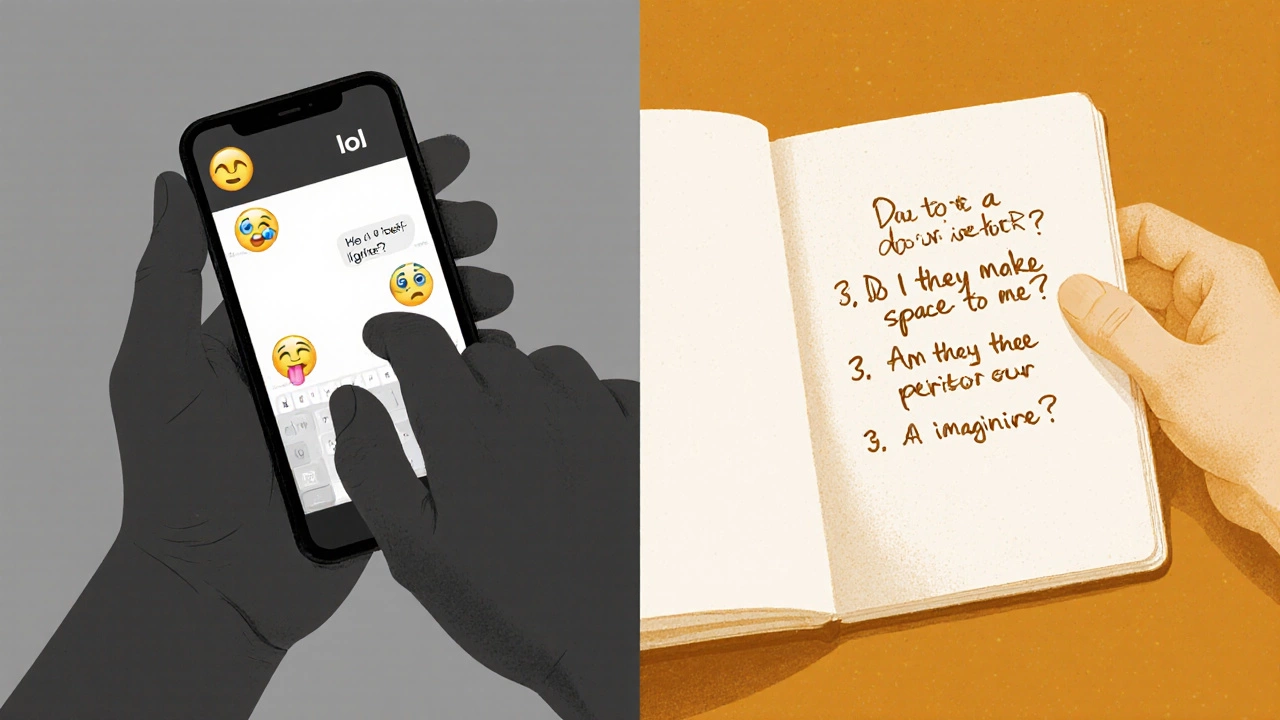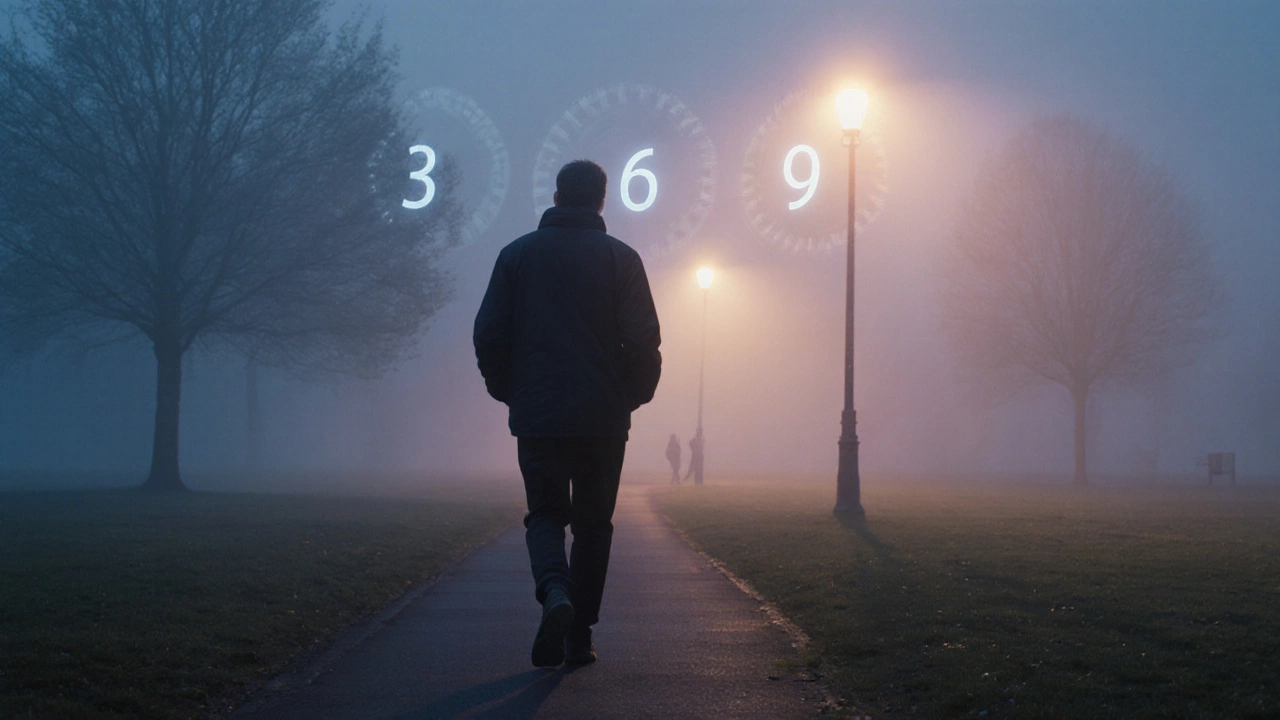Relationship Check-in Tool
How's Your Connection Growing?
Check in at each phase of your new relationship to gain clarity. Answer honestly—no judgment.
Your Connection Insights
Ever heard of the 3-6-9 rule in a relationship and wondered if it actually works? It’s not some scientific study or therapy technique. It’s a simple, no-fluff pattern that lots of people-especially those tired of rushing or dragging things out-use to build real connection without the pressure. You don’t need to be a relationship expert to use it. You just need to be honest with yourself and your partner.
What the 3-6-9 Rule Actually Means
The 3-6-9 rule is a timeline guide for emotional pacing in new relationships. It suggests checking in at three key points: after 3 days, 6 days, and 9 days of consistent contact. Not because you’re ticking boxes, but because these moments help you notice whether the connection feels natural-or forced.
Here’s how it breaks down:
- Day 3: You’ve texted, maybe met once or twice. This is when you ask yourself: Do I feel curious about them, or just excited because they’re new?
- Day 6: You’ve had a few conversations, maybe a second date. Now you check: Do I look forward to hearing from them? Do they make me feel safe to be myself?
- Day 9: You’ve shared something personal. This is the moment to ask: Do I want to keep going like this? Or am I just hoping things improve?
This isn’t about forcing a label or pushing for exclusivity. It’s about noticing subtle signals-ones you might miss if you’re too caught up in the thrill of a new crush.
Why This Rule Works When Other Advice Doesn’t
Most dating advice tells you to wait three days to text, or to never show too much interest. That’s outdated. Or worse-it makes you play games. The 3-6-9 rule does the opposite. It’s not about control. It’s about awareness.
Think about it: in the first week of dating, emotions move fast. You might feel butterflies, then doubt, then confusion-all in the same day. The 3-6-9 rule gives you anchor points to pause and reflect. Not to judge, but to observe.
One woman I spoke to in Leeds, who’d been through three failed relationships, told me she started using this rule after her last breakup. "I kept thinking, ‘If I just try harder, they’ll change.’ But I never asked myself if I actually liked who they were." At day 6, she noticed she was always the one initiating. At day 9, she realized she didn’t feel relaxed around them. She walked away. No drama. Just clarity.
What Happens If You Skip the Check-Ins?
Skipping these moments doesn’t mean you’re doing something wrong. But it often leads to one of two things:
- You get too attached too fast-because you’re filling emotional gaps with hope instead of evidence.
- You stay stuck in a gray zone-texting, hanging out, but never naming what you want.
Both lead to burnout. Or worse-wasted months wondering why things never clicked.
There’s a difference between being patient and being passive. The 3-6-9 rule helps you be patient in a way that protects your energy. It’s not about waiting for them to prove themselves. It’s about watching how they show up.

Real-Life Examples: How It Plays Out
Let’s say you meet someone at a coffee shop. You exchange numbers. You text the next day. Then you go out for dinner on day 2.
- Day 3: They don’t text. You wonder if you said something weird. But you don’t overthink it. You wait. Maybe they’re busy. Maybe they’re not into it. Either way, you’re not chasing.
- Day 6: They text back, ask how your week was, and suggest a walk in the park. You notice they remember you mentioned you hate crowded places. That’s a small thing-but it matters. You feel seen.
- Day 9: You share a story about your dad’s illness. They listen. Really listen. No quick fix. No "that’s so sad" and then changing the subject. You feel safe. That’s your answer.
Or, the opposite:
- Day 3: They reply fast, but only with emojis and "lol".
- Day 6: They cancel plans twice without offering a new time.
- Day 9: You ask if they’re seeing anyone else. They say "not officially." That’s not an answer. It’s a dodge.
In both cases, the rule doesn’t tell you what to do. It just shows you what’s already true.
What the Rule Doesn’t Do
It’s not a magic spell. It won’t make someone fall for you. It won’t fix a toxic dynamic. And it’s not a test you can apply to everyone.
This rule works best for people who:
- Are new to dating or re-entering it after a breakup
- Tend to idealize people too quickly
- Feel anxious when things don’t move fast
- Want to build something real, not just pass the time
If you’re already in a long-term relationship and using this to "check" your partner, it’ll feel weird. That’s not what it’s for. This is for the early, uncertain phase-when the future is still unwritten.
How to Use It Without Overthinking
The biggest mistake people make? Turning this into a spreadsheet. Don’t log texts. Don’t count replies. Don’t stress if they’re late.
Instead, ask yourself these three questions at each stage:
- Do I feel lighter or heavier around them? Real connection doesn’t drain you.
- Do they make space for me, or just take it? Are you a priority, or an option?
- Am I imagining a future, or just hoping for one? Are you seeing them-or your idea of them?
That’s it. No journaling. No charts. Just honest answers.

What to Do If the Rule Gives You a Hard Answer
Maybe at day 9, you realize you’re not into them. That’s okay. It’s better than pretending.
You don’t owe anyone a long explanation. Just say something simple: "I’ve really enjoyed getting to know you, but I don’t think we’re a good fit." That’s enough.
Or maybe you feel a quiet "yes." That’s your signal to slow down. Don’t rush into "I love you" or move in. Let the connection deepen naturally. The rule doesn’t end at day 9-it just gives you a foundation to build on.
Why This Matters More Than Ever Now
In 2025, dating feels more chaotic than ever. Apps give us endless choices. Social media makes people look perfect. Algorithms push us toward quick matches. It’s easy to lose track of what real connection feels like.
The 3-6-9 rule cuts through the noise. It reminds you that relationships aren’t about how often someone texts. They’re about how you feel when they’re near.
It’s not about rules. It’s about awareness. And awareness is the most powerful tool you have in love.
Is the 3-6-9 rule scientifically proven?
No, it’s not backed by peer-reviewed research. But that doesn’t make it useless. Many therapists and relationship coaches use similar pacing techniques because they’re based on how humans naturally build trust. It’s a practical tool, not a theory. People use it because it works in real life-not because a study says so.
Can I use the 3-6-9 rule for long-distance relationships?
Yes, but adjust the timeline. Instead of days, use weeks. Check in after 3 weeks of consistent contact, then 6, then 9. The goal is the same: notice whether the connection feels steady, not just frequent. Distance doesn’t change how you feel around someone-it just changes how you see them.
What if my partner doesn’t know about this rule?
Good. They shouldn’t. This isn’t a rule you apply to them-it’s one you use for yourself. You’re not trying to control their behavior. You’re learning to read the signals they’re already giving. If you start using this and notice changes in how you feel, that’s your insight-not their fault.
Does this rule work for LGBTQ+ relationships?
Absolutely. Emotional pacing doesn’t depend on gender or orientation. Whether you’re dating someone of the same gender, a different gender, or non-binary, the way you feel-safe, curious, seen-is universal. The 3-6-9 rule works because it’s about human connection, not labels.
What if I feel ready to move faster than day 9?
That’s fine. The rule isn’t a deadline. It’s a mirror. If after 5 days you already feel calm, excited, and clear about them, then go ahead. But don’t rush because you’re scared of losing them. Move fast only when you’re sure it’s because you want to-not because you’re afraid of being alone.
Final Thought: It’s Not About the Numbers
The 3-6-9 rule isn’t about counting days. It’s about learning to listen-to yourself, not just to them.
Love doesn’t need to be complicated. Sometimes, the best thing you can do is pause, breathe, and ask: Do I feel like myself around them? If the answer is yes, keep going. If it’s no, walk away. No guilt. No explanation needed.
That’s the real secret behind the rule. Not timing. Not tricks. Just honesty.






